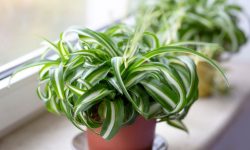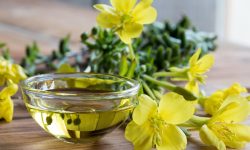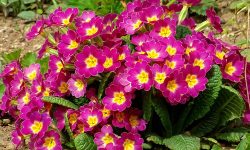Spider plant propagation has become a favorite project for indoor gardeners because it offers quick success and endless satisfaction. The plant produces small offshoots that hang gracefully from long stems, creating natural opportunities for beginners to explore plant growth. Many people love the process because it feels simple and rewarding. Each baby plant reflects resilience and easy care, which makes the spider plant perfect for anyone wanting to expand a collection without much effort. Propagation also gives people a chance to understand how plants respond to gentle handling and proper conditions.
Learning how to propagate spider plant correctly helps new gardeners avoid common mistakes and enjoy healthier results. Good preparation allows the plantlets to root faster and grow stronger. Clear steps also build confidence for future gardening projects. People often start with one spider plant and soon enjoy a thriving group because propagation happens so quickly. This guide explains the best techniques to help every plantlet succeed. It focuses on simple methods, practical care, and long-term growth. With the right approach, anyone can create vigorous baby plants that brighten any home.
Understanding Spider Plant Propagation Basics

Spider plant propagation begins with recognizing how naturally this plant produces new growth. The plant sends out arching stems that hold small plantlets, which develop tiny roots even before separation. These plantlets form when the mother plant receives enough light and steady moisture. Their natural growth pattern makes propagation easier than many indoor species. People only need to choose healthy plantlets and provide stable conditions. This foundation supports strong root development and prepares the plantlets for long-term success. Understanding these basics helps gardeners avoid unnecessary stress for both the plant and themselves.
The health of the mother plant plays an important role in propagation. A thriving spider plant produces stronger offshoots with better root formation. Gardeners should check the color and firmness of the leaves before removing any plantlet. Bright green foliage usually indicates good energy flow from the main plant. This energy supports the early growth of baby plants. Choosing well-developed plantlets increases the chance of smooth rooting. It also reduces the risk of shock after separation. This careful selection forms the first step in creating healthy new spider plants.
The environment surrounding the plantlets influences the entire propagation process. Spider plants prefer moderate humidity, indirect light, and evenly moist soil during early rooting. These conditions reflect what the babies experience while attached to the mother plant. Keeping the environment consistent helps the plantlets adapt easily after separation. Stable warmth also supports the growth of new roots. Many gardeners notice faster results when they place plantlets in a quiet area with gentle airflow. This attention to detail strengthens early development and builds a solid base for future care. Good conditions create confident gardeners and healthier plants.
Preparing the Mother Plant and Choosing the Right Plantlets
Successful propagation begins with careful preparation of the mother plant because strong parent growth produces stronger baby plants. A spider plant that receives bright, indirect light and consistent watering develops firm, vibrant foliage. These conditions help the plant generate healthy plantlets with early root nubs. Gardeners should avoid propagating from a stressed mother plant because it produces weaker offshoots. Preparing the mother plant also includes removing damaged leaves and ensuring the soil drains well. This simple preparation creates ideal energy flow and supports healthy propagation.
Selecting the right plantlets is equally important. Gardeners should look for babies that show small root tips or sturdy node points. These signs mean the plantlet is ready to grow independently. Plantlets with at least several mature leaves adapt quickly after separation. Soft, pale babies may struggle to root because they lack stored nutrients. Choosing well-formed plantlets helps reduce transplant shock. The process becomes smoother when each baby plant already shows signs of strength. Careful selection increases overall success and leads to more vigorous new spider plants.
Before separation, gardeners should observe how the plantlets attach to the mother plant. This observation helps determine the ideal moment for removal. Plantlets that hang naturally and show slight outward growth respond well to propagation. Some people prefer to root them while still attached to ensure a gentler transition. Others separate them immediately for independent growth. Both methods work when the plantlet is mature. Understanding these subtle signs helps gardeners feel more confident. Preparing the mother plant and choosing strong plantlets create the foundation for a thriving new spider plant collection.
How to Propagate Spider Plants in Water
Propagating spider plants in water offers a simple method that allows gardeners to watch roots develop in real time. Plantlets with small root nubs respond very well to this technique because water encourages quick early growth. To begin, gardeners should place the base of each plantlet in a clean container with enough water to cover the nodes. The leaves must remain above the water to prevent rot. This gentle setup helps the plantlet adjust without stress. Clear containers allow gardeners to monitor root progress and maintain steady moisture levels.
Fresh, clean water is essential during the early stages. Gardeners should replace the water every few days to avoid bacterial growth and keep oxygen levels high. Spider plant roots grow best in stable temperatures and filtered light. Direct sunlight can heat the water and harm new roots. Placing the container near a bright window supports healthy development without overwhelming the plantlet. As roots appear, gardeners will notice small white strands that thicken over time. This visible growth reassures beginners and motivates continued care.
Once the roots grow long enough, usually a few centimeters, the plantlet becomes ready for soil transfer. Gardeners should move carefully to avoid damaging the delicate root structure. Gently placing the plantlet into moist potting mix helps it adjust smoothly. The plant may show brief signs of stress, but steady moisture and soft light support recovery. Water propagation builds confidence for new gardeners because the process remains simple and predictable. Watching roots expand helps people understand plant behavior. This method creates strong beginnings and prepares spider plants for long, healthy lives in their new environment.
How to Propagate Spider Plants in Soil
Propagating spider plants directly in soil offers a stable start for plantlets that already show early root growth. This method gives the baby plant immediate access to nutrients and structured support. Gardeners should begin with a small pot filled with light, airy potting mix that drains well. A mix containing peat, perlite, and soft organic matter helps new roots move easily through the soil. Gently placing the plantlet into a small hole and pressing the soil around its base provides stability. This careful positioning prevents wobbling and encourages the roots to explore the surrounding space.
Moisture management plays an important role during soil propagation. Gardeners should keep the soil slightly damp but never soaked. Excess water reduces oxygen in the soil and can slow root development. Light misting helps maintain comfortable moisture levels for the new plant. Placing the pot in bright, indirect light encourages growth without stressing the delicate leaves. The baby plant may remain still for several days as it adjusts to its new environment. This quiet phase is normal. Hidden root activity continues even when leaf movement seems minimal. Stable conditions help the plant adapt smoothly.
As the weeks pass, gardeners will notice new leaves forming at the center of the plantlet. This growth signals successful rooting and stronger energy flow. Light fertilization may support further development once the plant shows clear signs of stability. Gentle feeding helps the spider plant strengthen its structure and build fuller foliage. Soil propagation gives plantlets a direct path to long-term growth because they adapt to the pot environment from the beginning. The method supports healthy root expansion and reduces the shock of later transplantation. With steady care, each baby plant becomes a thriving addition to any indoor garden.
Rooting Spider Plant Babies While Still Attached
Rooting spider plant babies while they remain attached to the mother plant offers one of the safest and most reliable propagation methods. This approach allows each plantlet to continue receiving energy from the parent while developing new roots. Gardeners place a small pot of moist soil beneath the hanging plantlet and gently press its base into the surface. The stem stays connected to the mother plant, which provides steady support during early growth. This guided rooting helps plantlets adapt to soil more easily and reduces the stress that often follows separation.
During this stage, consistent moisture becomes important because young roots respond well to damp but airy soil. Gardeners must avoid overwatering since excess moisture can cause decay around the base. Bright, indirect light encourages the plantlet to form new roots and develop stronger leaves. The mother plant continues to supply nutrients through the attached stem. This shared support system creates an ideal environment for early root formation. Many gardeners enjoy this method because it requires little intervention and yields dependable results. The plantlet grows at its own pace while benefiting from the stability of the parent plant.
Once the plantlet shows clear root development and begins producing new leaves, it becomes ready for separation. Gardeners can gently cut the connecting stem with clean tools and leave the young plant in its pot. At this point, the plant no longer depends on the mother plant for energy. It begins to grow independently with greater strength. This method ensures smooth rooting and reduces transplant shock. Rooting while attached provides a natural, stress-free progression from plantlet to full spider plant. The technique supports healthy development and gives gardeners a successful start with minimal effort.
Creating the Ideal Environment for Root Development
A stable environment is essential for successful spider plant propagation because young roots respond strongly to temperature, moisture, and light. The ideal setting includes warm air, soft brightness, and gentle airflow. These conditions mirror what the plant experiences in natural habitats. Gardeners should place new plantlets in a quiet corner where temperatures stay consistent. Sudden changes can slow development. Indirect sunlight supports healthy photosynthesis without burning delicate leaves. This balanced environment helps the plantlet feel secure and encourages steady root expansion.
Humidity also plays a significant role during early growth. Spider plant babies thrive when the air holds enough moisture to prevent leaf stress. Gardeners can increase humidity by placing a shallow tray of water nearby or grouping plants together. These methods create a gentle microclimate that encourages root formation. Proper moisture management in the soil or water container remains essential. Slightly damp soil supports oxygen flow while helping roots establish structure. Overly wet soil limits airflow and slows growth. When roots feel comfortable, the plantlet shows stronger leaf color and improved posture.
The environment should remain stable as the plantlet transitions into active growth. Gardeners may adjust the position of the pot to reflect changing light patterns throughout the day. Soft morning light and shaded afternoon conditions work well for developing plants. Maintaining clean surroundings prevents pests and fungus from disturbing young roots. Regular observation helps gardeners catch early signs of stress and adjust care accordingly. A supportive environment encourages the plantlet to grow confidently. With warmth, balanced humidity, and steady light, spider plants develop roots that anchor them into long, healthy lives. This thoughtful setup ensures every new plant thrives with minimal difficulty.
Caring for Newly Rooted Spider Plant Babies
Newly rooted spider plant babies need gentle care because they are still adapting to their environment. During the first weeks, the roots remain delicate and require balanced moisture. Gardeners should water lightly and allow the soil surface to dry slightly between each watering. This routine strengthens the developing roots and prevents rot. Bright, indirect light supports young leaves without causing heat stress. A quiet location helps the plant settle into its new pot. These small adjustments offer stability and create the foundation for long-term growth.
As the plantlet gains strength, gardeners can observe changes in leaf color and posture. Firm, upright leaves indicate that the roots have established a stronger connection with the soil. Any drooping usually means the plant needs slight environmental adjustments. A minor shift in light or watering can correct early stress. Keeping the pot clean and ensuring proper airflow reduces the chance of pests. Young spider plants appreciate simple, consistent care. They respond well to calm routines that support steady development. This phase helps gardeners learn how each plant reacts to its surroundings.
Once the baby spider plant shows reliable new growth, it becomes ready for normal maintenance. Gardeners may introduce gentle fertilization to encourage fuller foliage. A diluted, balanced formula works well because young roots absorb nutrients gradually. This approach prevents burning and supports slow, healthy expansion. With time, the plant begins to resemble a miniature version of the mother plant. Its growth pattern becomes more predictable, and its leaves display richer texture. Caring for newly rooted spider plants helps build confidence in propagation. When handled with patience, these babies develop into resilient and attractive houseplants.
Common Mistakes to Avoid During Propagation
Overwatering and Incorrect Moisture Control
Overwatering remains a frequent issue because many gardeners assume young plantlets require large amounts of water to root quickly. Excess moisture pushes oxygen out of the soil and creates conditions where fungus spreads easily. Spider plant babies rely on gentle hydration rather than constant saturation. Their early root cells need air pockets to expand, so soggy soil weakens development. Gardeners should feel the surface before watering to confirm that it has dried slightly. This simple habit supports balanced moisture and prevents early decline. It also helps beginners understand how responsive spider plants are to moderate care.
Improper moisture management also affects water propagation because plantlets depend on clean water to support early roots. Cloudy containers encourage bacteria, which slows growth and damages soft tissues. Changing the water every few days keeps oxygen levels high and removes harmful buildup. Warm, filtered light maintains steady rooting without overheating the container. These small adjustments help the plantlet adapt comfortably and create a healthy foundation for soil transfer. When moisture remains balanced, spider plant babies show stronger posture and richer color. Consistent routines reduce stress and lead to predictable, successful propagation.
Choosing Plantlets Too Early or Too Late
Selecting plantlets before they develop root nubs is one of the most common timing mistakes. Small babies without stored energy cannot handle sudden separation and often wilt within days. Their roots lack the strength to absorb moisture, which leads to slow or failed rooting. Gardeners should touch the base gently and confirm firmness before removal. Mature plantlets display tiny bumps that signal active root formation. This early development gives them the stability needed for water or soil propagation. Proper timing helps the plantlets transition smoothly and reduces the risk of shock after separation.
Waiting too long also creates problems because older plantlets may lose vigor while hanging from the mother plant. Long stems sometimes dry out, reducing nutrient transfer and weakening the baby plant. Oversized plantlets can also struggle during transplant because their early roots tangle easily. Observing color, leaf firmness, and structure helps determine the ideal moment. Healthy babies show bright leaves and a strong, compact center. Balanced timing protects the plantlet’s natural rhythm and prepares it for strong growth. Gardeners who pay attention to these cues enjoy higher success rates and more resilient spider plant collections.
Using Inappropriate Soil or Improper Propagation Setup
Using dense or compacted soil is a major mistake because young roots depend on loose textures to spread comfortably. Heavy soil compresses under moisture and eliminates the air pockets necessary for healthy root expansion. Spider plants grow best in light blends that combine drainage and softness. A mix containing peat, bark, and perlite allows water to pass through without pooling. This structure supports oxygen flow and encourages roots to move freely. Good soil also reduces fungal issues and provides a supportive base for early growth. Gardeners who choose breathable mixtures see faster adaptation and stronger plants.
Improper propagation setups often slow progress because plantlets depend on stable conditions during early development. Oversized pots hold too much moisture, which creates an unpredictable environment for small root systems. Smaller containers offer better control and keep watering more consistent. Lighting also influences growth. Bright, indirect light supports early photosynthesis without burning tender leaves. Stable temperatures help the plantlet adjust calmly, while soft airflow prevents humidity buildup. A careful setup gives the plant every advantage during its first weeks. Proper preparation prevents unnecessary stress and helps each young spider plant grow into a robust, attractive indoor plant.
When to Transplant Baby Spider Plants into Larger Pots
Transplanting baby spider plants into larger pots requires careful timing because young roots need enough strength to handle a new environment. Gardeners should wait until the plantlet shows clear signs of stability, including new leaf growth and firm posture. These signals indicate that the roots have established a reliable structure within the smaller pot. Moving too early disrupts the plantlet’s rhythm and can slow long-term development. A patient approach gives the baby plant a smoother transition and helps it adapt more confidently to fresh soil.
The choice of pot size also affects the success of transplantation. A pot that is too large traps moisture and reduces oxygen flow, which limits root expansion. Gardeners should choose a pot only slightly bigger than the current one. This controlled space helps the plant manage hydration and supports gradual growth. Fresh soil with good drainage gives the spider plant a clean environment free from compacted particles. The plantlet will adjust more quickly when the pot size matches its current strength. A balanced container allows roots to spread naturally at a comfortable pace.
After transplanting, the spider plant needs a calm environment to settle properly. Bright, indirect light helps the plant maintain healthy respiration without overheating. Gentle watering allows the soil to firm around the roots and supports early stability. During this phase, gardeners should avoid moving the pot frequently because constant shifts disrupt the plant’s sense of balance. As the plant adapts, new leaves appear at the center, signaling successful establishment. Proper timing, careful pot selection, and steady aftercare help baby spider plants grow into strong, attractive indoor specimens. These steps ensure healthy development all the way into maturity.
Best Soil and Potting Mix for Strong Root Growth
Choosing the right soil is essential for strong spider plant development because young roots depend on loose texture and steady moisture. A light, airy potting mix supports early branching and prevents roots from suffocating. Gardeners should select soil that drains well and feels soft when pressed. Mixes containing peat, perlite, and gentle organic material create ideal structure. This balance protects new roots from compaction and reduces the risk of rot. A well-prepared soil blend gives every plantlet the best possible start and encourages steady early growth.
Soil health also depends on how well it maintains moisture without becoming heavy. Spider plants thrive when the potting mix holds slight dampness while allowing excess water to escape. Perlite helps air reach the roots and keeps the soil from collapsing under pressure. Organic matter enriches the mix with nutrients that feed early leaf growth. This harmony between drainage and moisture retention supports a strong root system. When the soil feels springy and light, it tells gardeners that the mix will encourage healthy development. Good soil becomes the backbone for every future stage of growth.
The pot itself influences how well the soil performs. Containers with drainage holes protect the plant from unnecessary moisture buildup. Terracotta pots help release excess water and prevent the mix from staying too wet. Plastic pots retain moisture longer and may suit warm, dry indoor spaces. Gardeners should choose the material based on their home environment and watering habits. After potting, gentle watering settles the soil around young roots. Bright, indirect light protects the plant while it adjusts. When soil, container, and care align, the spider plant grows confidently and forms a stable foundation for long-term health.
Light, Water, and Temperature Needs for Growing Baby Spider Plants
Baby spider plants depend on balanced light because their young leaves cannot handle intense sun. Bright, indirect light supports photosynthesis without causing heat stress. Placing the plant near a window with filtered brightness helps it grow steadily during the first weeks. Soft morning light works especially well because it is gentle and consistent. When the light is balanced, the plantlet maintains strong color and upright posture. Too much sun causes leaf scorching, while too little slows root development. A stable lighting routine encourages confident growth and prevents unnecessary strain.
Water needs also shift during early growth. Baby spider plants prefer evenly moist soil, but they cannot tolerate soggy conditions. Gardeners should water lightly and allow the top layer of soil to dry slightly before the next watering. This pattern strengthens the root system and prevents fungal issues. Overwatering often leads to limp leaves and weak growth, so careful moisture control becomes essential. Watering from the base can help roots absorb moisture naturally, but gentle top watering also works when done slowly. Clean water supports healthier development and helps the plant settle into its pot.
Temperature stability plays an important role in early success. Baby spider plants grow best in a warm environment that avoids sudden changes. Ideal temperatures fall between comfortable indoor levels, neither too hot nor too cool. Cold drafts slow metabolism and hinder root expansion. Excess heat dries the soil quickly and stresses the leaves. A quiet space with stable airflow offers the best environment. Consistent warmth encourages steady energy flow through the plantlet and supports stronger new leaves. When light, water, and temperature remain balanced, baby spider plants adapt quickly and grow into resilient, healthy indoor plants.
How to Encourage Faster Growth After Propagation
Encouraging faster growth in baby spider plants begins with creating conditions that support steady energy flow. Young plants grow best when their environment remains predictable and calm. Bright, indirect light fuels early photosynthesis without overwhelming the leaves. This balanced lighting helps the plant convert energy efficiently and build stronger roots. Gentle watering also matters because new roots absorb moisture slowly. Allowing the top layer of soil to dry slightly between waterings supports healthy development. This routine helps prevent rot and encourages roots to expand deeper into the potting mix.
Nutrition becomes more important once the plantlet shows new growth. A diluted, balanced fertilizer provides a mild boost without stressing the young root system. Feeding every few weeks strengthens the plant’s internal structure and supports fuller leaves. Gardeners should avoid heavy fertilization because young plants cannot process strong formulas. A soft approach gives the spider plant enough nutrients to grow at a comfortable pace. Good airflow also contributes to faster development. Gentle movement of air prevents moisture buildup and keeps the plant’s surface dry. This reduces the chance of fungal issues and supports cleaner growth.
Repotting at the right time also accelerates progress. When roots fill the small starter pot, the plant can no longer expand freely. Moving it into a slightly larger container gives the roots new space to grow. Fresh soil provides renewed nutrients and better structure. This change often results in visible growth within days. Gardeners should avoid oversized pots because excess soil holds moisture too long. A simple upgrade encourages stable progress. With warm temperatures, consistent routines, and thoughtful care, spider plant babies respond quickly. These methods help them grow strong, confident, and ready to thrive as mature houseplants.
FAQs About Propagating Spider Plants
Why is my spider plant baby not growing roots?
Spider plant babies often fail to grow roots when they are separated too early or placed in an environment with inconsistent moisture. Plantlets without early root nubs need more time on the mother plant. Stable humidity, bright indirect light, and clean water or airy soil usually encourage new roots to form within one to two weeks.
Should I propagate spider plants in water or soil?
Both water and soil propagation work well, but each offers different advantages. Water allows you to watch roots develop, which helps beginners learn plant behavior. Soil provides immediate structure and nutrients, creating a stronger long-term start. The best choice depends on your preference and how confident you feel with moisture control.
How long does spider plant propagation take?
Most spider plant babies begin developing noticeable roots within one to three weeks, depending on light, temperature, and plantlet maturity. Soil-rooted babies may grow more slowly at first but build stronger structures. Water propagation often shows quick early progress. With stable care, plantlets typically become independent within a month.
Why are the leaves of my propagated spider plant turning brown?
Brown leaf tips usually appear when humidity is too low or watering becomes inconsistent. Newly propagated babies react strongly to environmental stress. Using filtered water, adjusting light levels, and maintaining gentle moisture can help reverse early browning. Once the roots strengthen, the plant becomes more resilient and recovers steadily.
When can I fertilize newly propagated spider plants?
Fertilization should only begin once the plantlet shows clear new growth because young roots cannot process strong nutrients. A diluted, balanced fertilizer every few weeks supports steady development. Overfeeding can burn the roots, so a gentle, patient approach works best. Simple care and soft light prepare the plant for healthy long-term growth.






